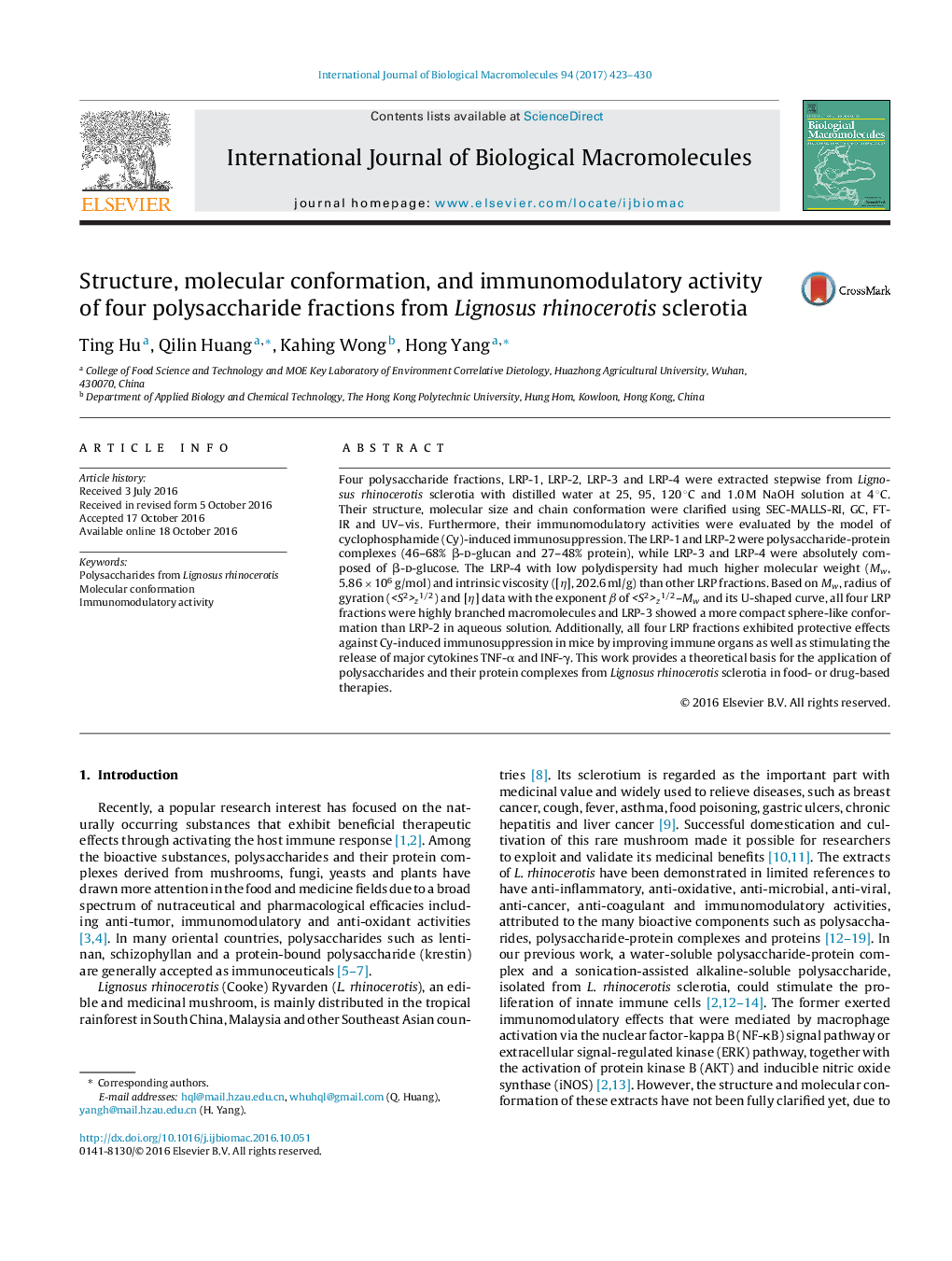| Article ID | Journal | Published Year | Pages | File Type |
|---|---|---|---|---|
| 5512515 | International Journal of Biological Macromolecules | 2017 | 8 Pages |
â¢LRP-1, 2, 3 fractions were extracted from L. rhinocerotis with 25, 95 and 120 °C water, while LRP-4 with 1.0 M NaOH at 4 °C.â¢LRP-1 and LRP-2 were polysaccharide-protein complexes, while LRP-3 and LRP-4 consisted of β-d-glucose.â¢Based on the exponent β of
Four polysaccharide fractions, LRP-1, LRP-2, LRP-3 and LRP-4 were extracted stepwise from Lignosus rhinocerotis sclerotia with distilled water at 25, 95, 120 °C and 1.0 M NaOH solution at 4 °C. Their structure, molecular size and chain conformation were clarified using SEC-MALLS-RI, GC, FT-IR and UV-vis. Furthermore, their immunomodulatory activities were evaluated by the model of cyclophosphamide (Cy)-induced immunosuppression. The LRP-1 and LRP-2 were polysaccharide-protein complexes (46-68% β-d-glucan and 27-48% protein), while LRP-3 and LRP-4 were absolutely composed of β-d-glucose. The LRP-4 with low polydispersity had much higher molecular weight (Mw, 5.86 Ã 106 g/mol) and intrinsic viscosity ([η], 202.6 ml/g) than other LRP fractions. Based on Mw, radius of gyration (
